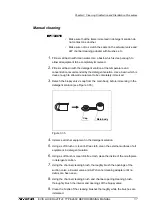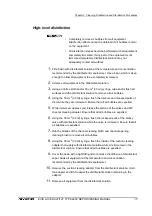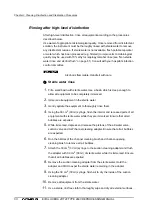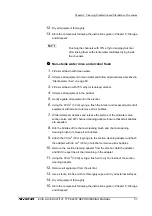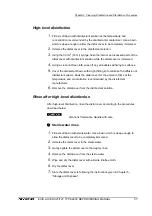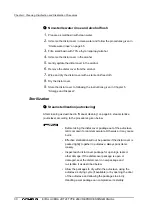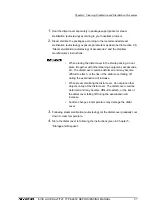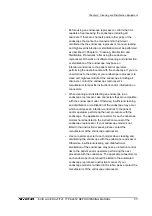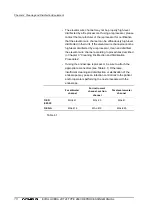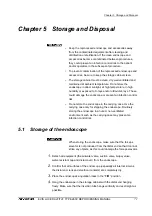
Chapter 5 Storage and Disposal
71
EVIS LUCERA JF/TJF TYPE 260V REPROCESSING MANUAL
Chapter 5 Storage and Disposal
• Keep the reprocessed endoscope and accessories away
from the contaminated equipment after cleaning and
disinfection or sterilization. If the clean endoscope and
accessories become contaminated between procedures,
they could present an infection control risk to the patient
and/or operators in the subsequent procedure.
• To prevent contamination of the reprocessed endoscope and
accessories, be sure to keep the storage cabinet clean.
• The storage cabinet must be clean, dry, well ventilated and
maintained at ambient temperature. Do not store the
endoscope in direct sunlight, at high temperature, in high
humidity or exposed to X-rays and/or ultraviolet-rays. These
could damage the endoscope or present an infection control
risk.
• Do not store the endoscope in the carrying case. Use the
carrying case only for shipping the endoscope. Routinely
storing the endoscope in a humid, non-ventilated
environment such as the carrying case may present an
infection control risk.
5.1
Storage of the endoscope
When storing the endoscope, make sure that the forceps
elevator is not protruded from the distal end so that it cannot
strike any objects, as this could damage the forceps elevator.
1.
Detach all equipment (the air/water valve, suction valve, biopsy valve,
water-resistant cap and distal cover) from the endoscope.
2.
Confirm that all surfaces of the endoscope (especially all internal lumens,
the distal end, lens and electrical contacts) are completely dry.
3.
Place the endoscope’s angulation locks in the “F
” position.
4.
Hang the endoscope in the storage cabinet with the distal end hanging
freely. Make sure that the insertion tube hangs vertically and as straight as
possible.

